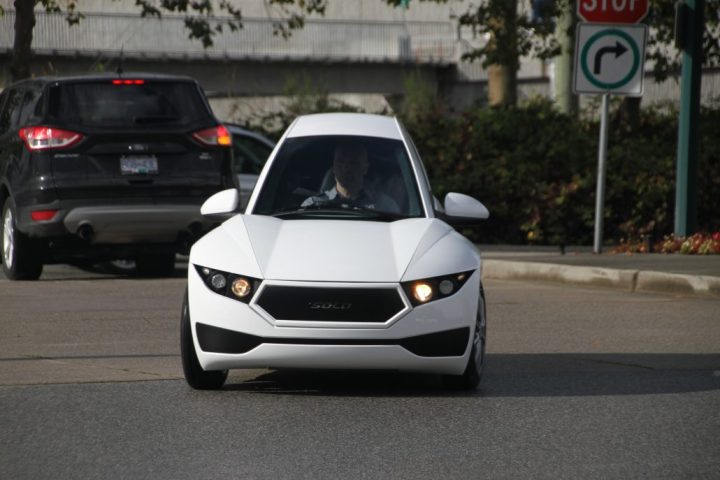
The Solo boasts a 100 mile range and lithium ion battery that needs just 3 hours of charging time
Meet the Electra Meccanica Solo, a car that holds only you, yourself, and your lonesome. This single-seater electric car is meant to be as environmentally friendly as possible by reducing the amount of real estate in the car to only what you need — which is to say, a single seat.
Making its debut at CES, the one-seater takes into consideration the fact that nearly 80 percent of Americans commute by themselves in their personal vehicle. And while it may be difficult to convince all those loners to pick up a few passengers, it’s probably easier to give them a way to revel in their solitude.
“We want to show — not simply tell — our audience that we are doing our part to invest in a cleaner planet for future generations,” Electra Meccanica CEO Jerry Kroll said. “Essentially, the Solo has two doors, three wheels, and one overarching mission: To close the last gas station.”

With quite an affordable price tag of $15,500, the Solo boasts a range of 100 miles and has a lithium-ion battery that needs just three hours of charging time on either a 220-volt charging station or outlet. While the top speed is just 82 miles per hour, it’s not as though you’ll be looking to break any records with your single-person ride. After all, who have you to impress other than yourself? Regardless, you can go from 0 to 60 in just eight seconds (even though the Solo only has three wheels), so you’ll still be able to cover some ground in a jiffy.
As for the design of the cabin itself, it doesn’t seem as though you’ll be trapped in a coffin. There is a large windshield and, as Slashgear notes, “a shoulder line that scallops down under the side glass.” All instrumentation is featured on an LCD inset that is pretty far down into the dashboard, so you won’t have a ton of gear cramping your style. Power windows and a heated seat comes standard, while air conditioning is optional.
And to help you park your miniature car, there’s a reversing camera. While you can’t carry passengers, you can actually carry some cargo — there’s both a front and rear trunk capable of holding 285 liters of … stuff.
The Solo is slated to ship in Q4 2018, so if you’re looking for a new ride this year, you may have just found a winner.


